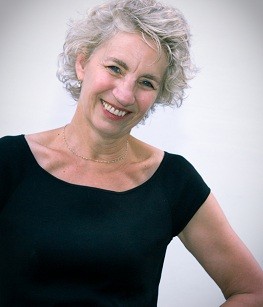AMSA Charter School and the Myth of the Dot-Com Bust
Thursday, March 01, 2012

Most fields are becoming so information-dependent, every company has an information technology (IT) department. Downsizing companies don’t lay off the folks maintaining their data bases, or those creating new ways to use technology to improve business performance or save money.
On his Xconomy blog. Ed Lazowska quotes this story from a contact: “I’m a senior who transferred to UW (University of Washington) from Shoreline Community College. My employment history is zilch – a little retail, that’s it. Yet [top tech company] offered me a $30/hr internship just based on the fact that I’m in UW CSE.”
Lazowska also crunches some Bureau of Labor Statistics about science and technology job growth, projected from 2008-2018, and generates a chart showing that computer specialists will be needed in droves. The demand dwarfs the growth of demand for engineers, life scientists and physical scientists.
And yet, in 2000, academia in the U.S. granted roughly 16,000 computer-science (c.s.) degrees. To me, that number seems small. But during the dot-com bust, enrollment dropped by half. Now, even with pundits bellowing otherwise, students believe the intractable myth that c.s. is still a bust industry.
In contrast, one of the stand-out features of the Advance Math and Science Academy Charter School (AMSA) is its requirement that all students, grades 6 - 11, take computer science. Other schools might offer electives that teach powerpoint and desktop publishing. AMSA’s seventh graders learn Python, usually a college-level offering. Sixth graders learn to program in a language called Alice, shareware that Carnegie Mellon developed to teach programming to their own non-c.s. majors.
AMSA believes that engaging kids in computer-science from the get-go especially helps those students who enter the school with poor math skills, or who are disengaged from academics.
With enough experience and passion for solving IT problems – hey, what else is the video-game craziness about? – students who don’t want to go to college right away can get good-paying work. Immediately. A kid who leaves AMSA can easily find a job at Bose or other high-tech firms in Massachusetts’ high-tech hotbed. Nationally, companies are so hungry for skilled labor, they don’t care what degree you got or where you went to school. Just prove that you can do the work.

So AMSA resembles a dual language school, except that instead of conducting all classes in, say Spanish and English, students are “immersed” in computer science as their common second language. (The school also requires the kids to learn at least one speakable language as well.) But like a dual-language school, students practice computer languages so routinely, they are proficient well before they even think about college.
Kelly Powers, the computer science department chair, says, “For me what’s been wonderful is to deliver a computer science curriculum in grades 6 and 7. They’re like sponges. It’s not a question of whether they can handle it. I want to bring the ALICE developers here to the school to show them what our kids can do. Our kids don’t learn a computer language for the sake of it. They are always engaged in a task that requires that language. They must be in the process of application.”
She also notes that STEM, Science, Technology, Engineering and Math, is not the same as computer science. Each field is lost without computers, but no one had previously created a curriculum for teaching c.s. 6 - 11th grade.
Powers realized she had to create one herself. So she peppered all sorts of national leaders with questions until they finally invited her to brainstorm with them about filling this important need. “If there’s a first course, what would it be? What would get the kids interested?”
The Association of Computer Machinery pulled together a national conversation on the subject, and ran a workshop on the AMSA campus.
Powers says, “We’ve asked our middle-school teachers to attract girls into “artbotics.” One group created a birthday cake with temperature sensors whose lights went out when a kid blew out the candles. They programed the robot to play the birthday song. Then in an afternoon, the girls wrapped up the cake, attractively, so you couldn’t see the robot. The girls got into it. We’re combining art with machinery to pull in the broadest range of kids.”
She takes a breath, seemingly done, but adds, “Oh and by the way, here are the computational skills involved.” Math, in other words.
AMSA seems to be the only school I know that’s responding to the needs of business and the emerging workforce in quite so targeted a way.
Which means that it lives squarely in the real world, instead of a cluelessly-remote ivory tower. But remember, from last week’s column, they read the likes of Gilgamesh, too.
Next week we’ll go into a c.s. classroom and take a close look at the inner workings of this remarkable school.
Julia Steiny is a freelance columnist whose work also regularly appears at EducationNews.org. She is the founding director of the Youth Restoration Project, a restorative-practices initiative, currently building a demonstration project in Central Falls, Rhode Island. She consults for schools and government initiatives, including regular work for The Providence Plan for whom she analyzes data. For more detail, see juliasteiny.com or contact her at [email protected]




Follow us on Pinterest Google + Facebook Twitter See It Read It